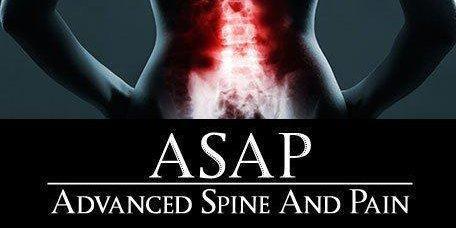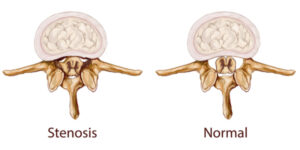Spinal Stenosis Specialist

If you regularly experience pain or numbness in your back or neck, you may have a condition known as spinal stenosis. At Advanced Spine and Pain Center, the dedicated team of doctors has extensive experience diagnosing and treating several spinal conditions, including spinal stenosis. They offer effective solutions for managing the pain, often without significant surgical intervention. Schedule your appointment at their Stafford, VA location or one of their Fairfax County, VA or Greater Baltimore, MD area locations to learn more about your treatment options. Book online now.
Spinal Stenosis Q&A
What is spinal stenosis?
Spinal stenosis involves the narrowing of the space within your spine. As the spine shrinks, spinal nerves become increasingly compressed and trigger ongoing pain.
Spinal stenosis is classified by the area where it develops:
- Cervical stenosis: spinal narrowing occurs in the neck

- Lumbar stenosis: spinal narrowing occurs in the lower back
Lumbar stenosis is the most common form. Your doctor may diagnose you with one or both types of spinal stenosis.
What causes spinal stenosis?
A canal surrounds your spinal nerves formed by bones that protect them from damage. As you age, this canal narrows and places pressure on your spinal nerves.
You may have been born with a narrow spine or experienced an injury that damaged your spinal column, causing spinal stenosis.
Other causes of spinal stenosis include:
- Osteoarthritis
- Herniated discs
- Tumors
- Ligament thickening
- Trauma
If you’re over 50, your risk of spinal stenosis increases as your spine health begins to deteriorate. If you’re younger than 50, you may develop spinal stenosis due to genetic diseases or deformities.
What are the symptoms of spinal stenosis?
You may experience spinal stenosis pain gradually at first. Pain can worsen over time and during activity. Symptoms vary with both diagnoses.
Cervical stenosis is marked by:
- Pain in your neck
- Numbness or tingling in your extremities
- Balance and walking issues
- Bladder or bowel dysfunction (in severe cases)
If you have lumbar stenosis, you may experience:
- Pain in your back
- Numbness or weakness in a leg or foot
- Leg cramps with prolonged standing or walking
What are the treatment options for spinal stenosis?
If your doctor diagnoses you with spinal stenosis, they may first recommend physical therapy and medications to relieve pressure on the nerves and alleviate pain. They may also administer an epidural containing steroids and anesthetic to reduce pain and inflammation.
If these therapies don’t provide you with relief, your doctor may suggest:
Coflex® decompression
Spinal decompression is a surgical procedure where your surgeon opens up your spinal canal. This procedure relieves pressure on your spinal cord and nerves. After the decompression, your surgeon implants a Coflex titanium metal implant that supports your spine following the decompression.
Laminectomy
Your surgeon performs a laminectomy to widen the space in your spinal canal by removing the back part of a vertebra known as the lamina. This procedure releases pressure placed on your spinal nerves.
WHAT WE OFFER
Services
Osteoarthritis
PRP
Sciatica
Herniated Disc
Shoulder Pain
Spinal Fusion
Spinal Stenosis
Knee Pain
Lower Back Pain
Neck Pain
Scoliosis
Spinal Cord Stimulator
Opioid Addication
Osteoporosis
Pain Pumps
Degenerative Disc Disease
Epidural Steroid Injections
Hip Pain
Stem Cell Therapy
Microdiscectomy
Choose Your Preferred Location
Maryland
Virginia
